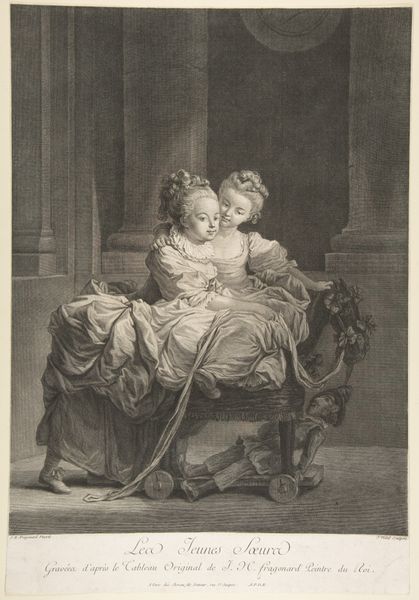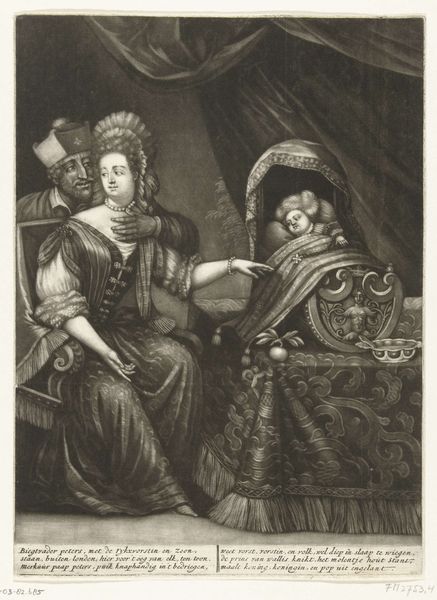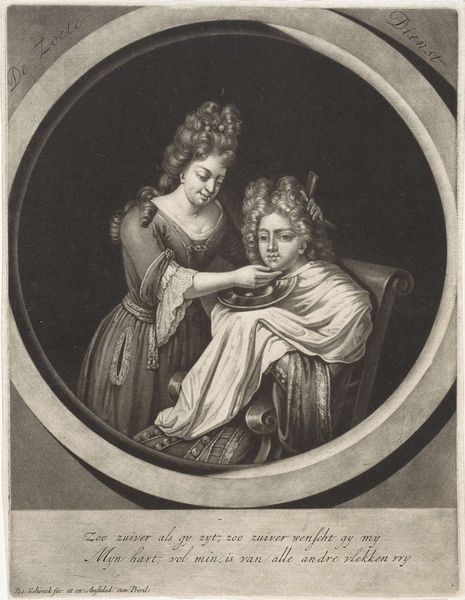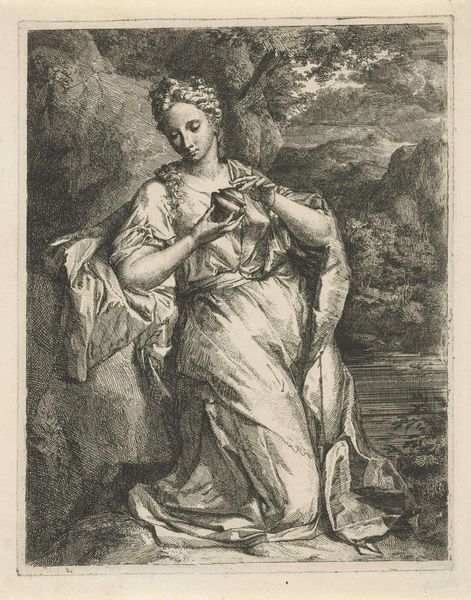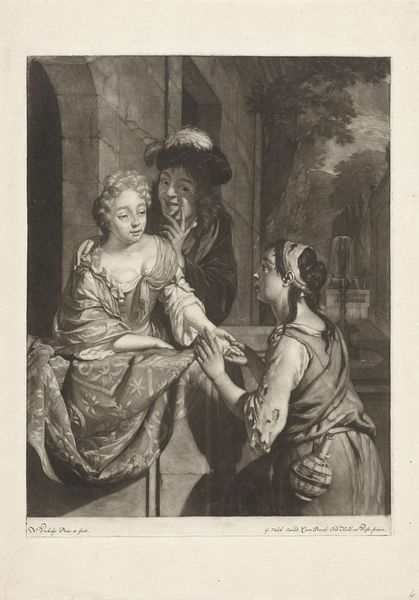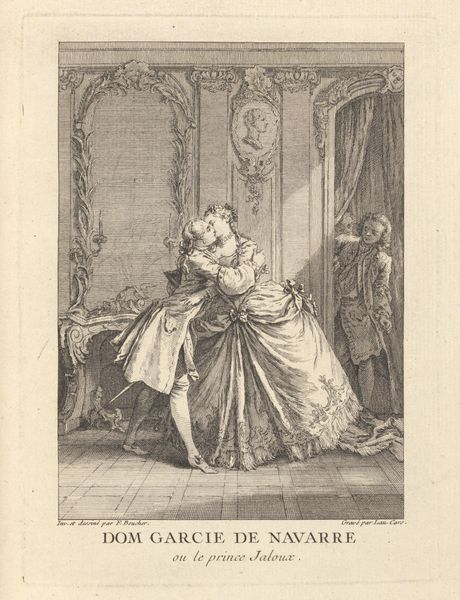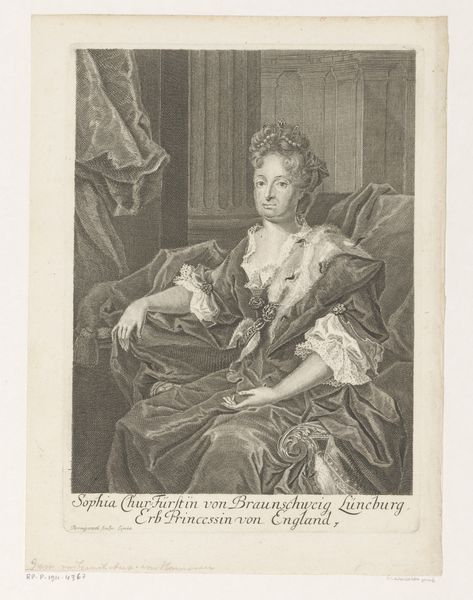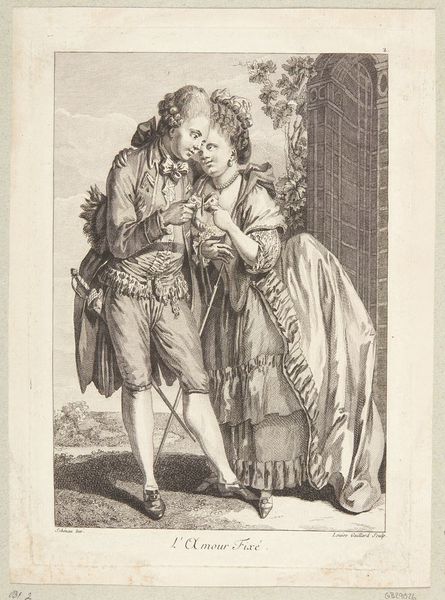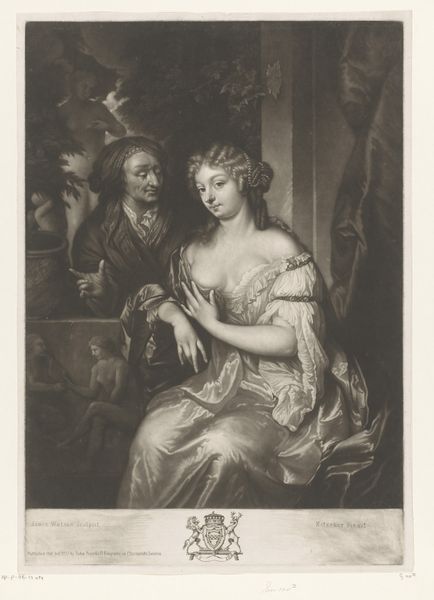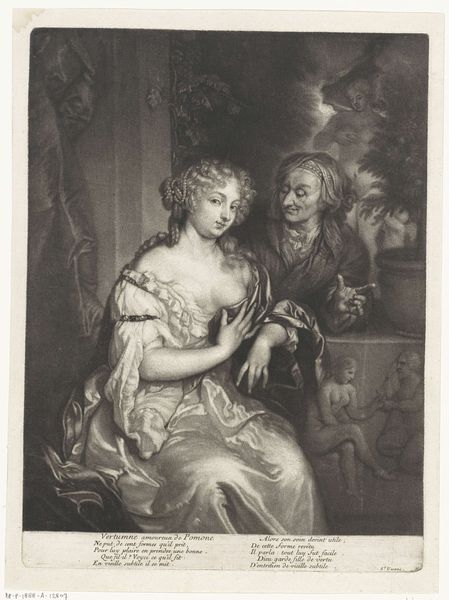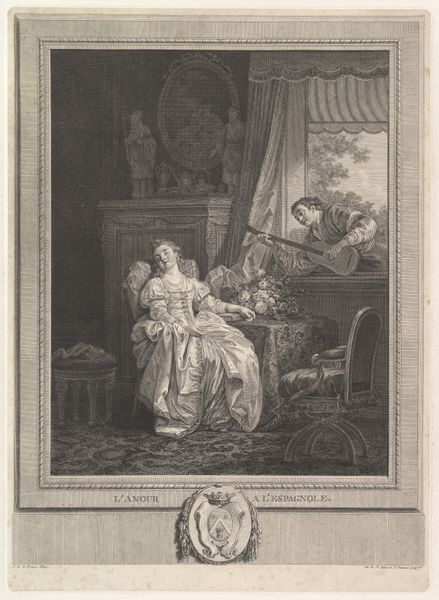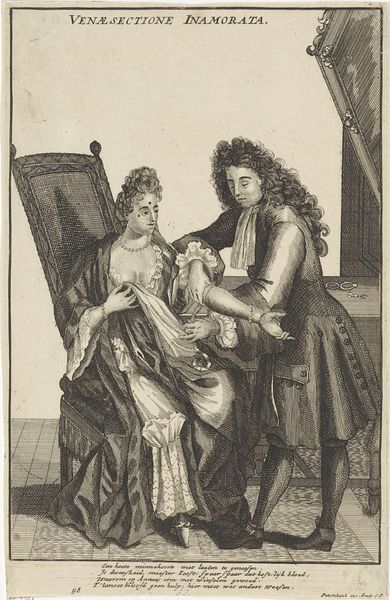
print, engraving
#
portrait
#
neoclacissism
#
mother
# print
#
pencil drawing
#
portrait drawing
#
engraving
Dimensions: height 284 mm, width 205 mm
Copyright: Rijks Museum: Open Domain
Editor: Here we have "Mevrouw Hardinge en haar zoon," dating somewhere between 1738 and 1815, engraved by Francesco Bartolozzi. It's a print, quite detailed and clearly neoclassical. It feels very staged, almost like a tableau vivant. What strikes you when you look at this image? Curator: Well, firstly, the visual language employed carries significant cultural weight. This image leans heavily on symbols of motherhood and education, familiar tropes during that period. Notice the architectural elements - the pillar? It suggests stability, reason, alluding to classical virtues the mother imparts to her son. Editor: So the setting reinforces the message? Curator: Precisely. But observe, also, the overt display of wealth in the mother’s dress and hair. This isn't just about nurturing, but also about transmitting social status and expectations. How do you think the book held by the child figures into this symbolic tableau? Editor: It represents knowledge, obviously, but also maybe the constraints placed on him? His gaze isn’t directed at the book, more toward the viewer. Curator: An excellent point. He acknowledges us, implicating us in this performance. The symbols suggest not just a transfer of knowledge, but the construction of identity within a social hierarchy, frozen in this perpetual moment of instruction. What might that say about the family’s aspirations? Editor: I hadn’t considered that it's almost like a performance for posterity! This artwork offers a powerful snapshot of social values from centuries ago. Curator: Indeed. And through this matrix of symbols, we begin to understand the enduring psychological power that these images, these societal narratives, hold. It highlights a cultural memory we can still decipher today.
Comments
No comments
Be the first to comment and join the conversation on the ultimate creative platform.
